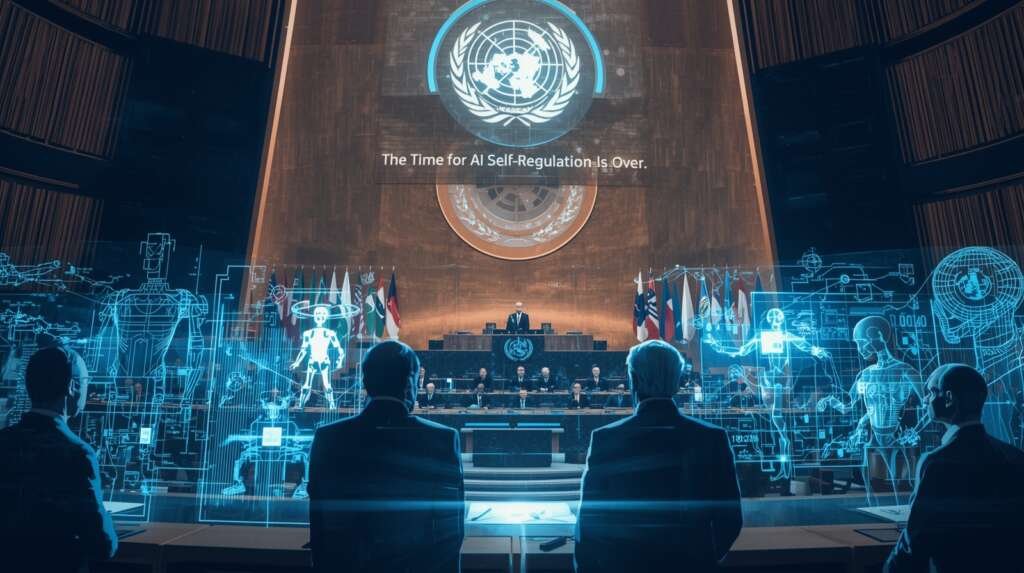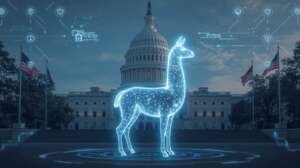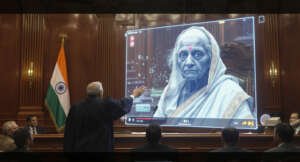As world leaders gathered for the 80th session of the United Nations (UN) General Assembly in New York this week, more than 200 prominent figures including Nobel laureates, former heads of state, leading AI researchers, and human rights advocates issued a rallying cry: set enforceable global limits on artificial intelligence before it is too late.
The group unveiled a joint declaration, called the “Global Call for AI Red Lines,” urging countries to establish and agree upon rules by the end of 2026 to ban what they describe as the most dangerous and unacceptable uses of AI.
What are the concerns
According to the declaration, without binding safeguards, AI’s rapidly growing capabilities could bring about serious risks. These include:
-
Engineered pandemics or biological threats
-
Large scale manipulation, disinformation campaigns, or the erosion of democratic institutions
-
Mass surveillance and social scoring systems that undermine fundamental rights
-
Loss of human control over automated systems, including lethal autonomous weapons or AI with independent decision making in critical domains
The signatories warn that the window for meaningful intervention is narrowing. As AI systems grow more capable, it becomes harder to engineer effective controls after the fact.
Who is involved
Among those calling for action are:
-
Nobel Prize winners across disciplines
-
AI researchers from organizations such as OpenAI, Google DeepMind, and Anthropic
-
Former political leaders and diplomats including Mary Robinson, former Irish President, and Juan Manuel Santos, former Colombian President
-
A coalition of more than 70 academic, civil society, and industry organizations worldwide.
What is being proposed
While the declaration does not yet define every red line in detail, it proposes a framework of rules that no AI system should ever violate. Some widely supported examples include bans on:
-
AI systems controlling nuclear arsenals
-
AI led autonomous weapons
-
Mass surveillance systems or opaque social scoring
-
Impersonation of individuals by AI in deceptive or harmful ways
The signatories emphasize that enforcement is crucial. They call for robust and verifiable mechanisms, possibly through a treaty or international agreement, rather than voluntary guidelines.
Challenges ahead
Putting these red lines into practice will not be easy:
- Geopolitical differences: Different countries have different priorities, values, and regulatory cultures. Getting consensus on what constitutes a “red line” is a huge diplomatic and ethical undertaking.
- Enforcement mechanisms: Having rules is one thing; enforcing them, especially across borders, is far more difficult. There are questions about who monitors, who penalizes, how transparency is ensured.
- Tech pace & unpredictability: AI is advancing quickly, often in unanticipated ways. Risk assessments today might not cover tomorrow’s dangers.
- Balancing innovation vs risk: Some argue that overly strict rules could stifle beneficial AI development. The challenge is to protect people’s rights and safety without suppressing progress.
Where things stand
The declaration aims for an agreement by the end of 2026, giving governments about a year to negotiate and adopt binding red lines.
Some of the steps in motion include:
-
Proposals for a UN General Assembly resolution.
-
Possible development of an independent international body or regulatory framework to oversee compliance.
-
Increasing public awareness and pressure, as media coverage and expert commentary highlight the stakes.
Why it matters
AI systems are no longer confined to laboratories. They are already integrated into business, education, governance, and entertainment. Their growing autonomy, scale, and complexity mean the risks are no longer theoretical. If strong global red lines are not established, humanity may face abuses of power, threats to democracy, and even scenarios that affect human survival. Clear rules, on the other hand, could ensure AI remains a tool for human benefit.
The “Global Call for AI Red Lines” sends a strong signal. Experts and leaders are urging humanity to decide, in clear terms, what AI must never be allowed to do. The next year will be critical. Countries, technology companies, and civil society must turn these warnings into concrete agreements and policies before the opportunity slips away.
This moment could define how AI shapes the world for generations. Supporters of the declaration argue that the coming months are not just about regulations, but about setting moral boundaries for machines that are increasingly influencing human lives. They see the initiative as a chance to prove that global cooperation is still possible on issues that cut across borders, politics, and ideologies.
Skeptics warn that the process will be slow and contentious, with powerful nations and corporations unlikely to give up control easily. Yet even they acknowledge that failing to act could invite far greater dangers, from instability to irreversible misuse of powerful technologies.
If the UN and world governments succeed, the red lines could become a historic precedent, much like nuclear arms treaties or climate accords. If they fail, the world may be left grappling with technologies that outpace human ability to manage them, creating risks humanity cannot afford to ignore.




